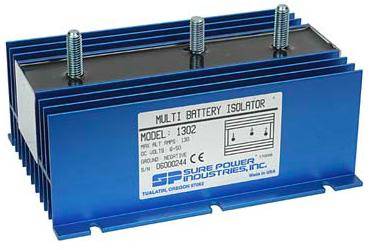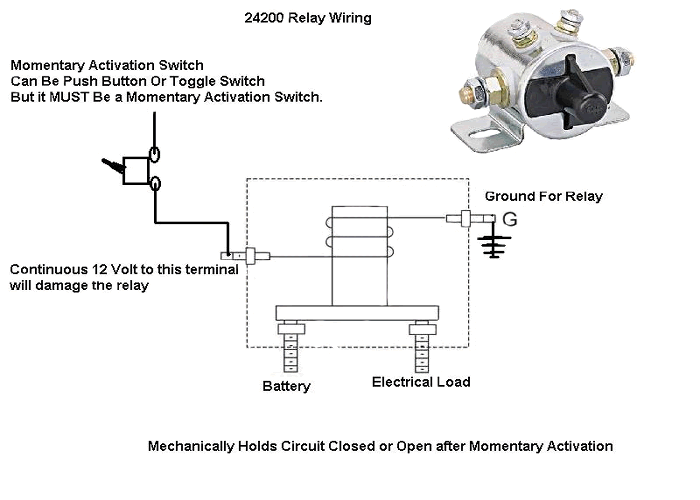
Battery isolator relay ac delco install#
Install the fuse holder intended for dual battery use. It is also placed on the firewall directly above the wire coming from the alternator. The mounting procedure is identical to that of the isolator. I acquired mine as kit that included the relay, connector, seals, terminals, TPA, and CPA from Install the relay that controls the battery isolator. So I used M6 threaded inserts and flange bolts from ACE hardware. If your truck is like mine, then it doesn't have the needed studs from the factory. It goes on the firewall, up and left from the brake booster. GM calls this a "secondary auxiliary relay". Start by installing the battery isolator.īattery Isolator (GM P/N 12135194). If the crimp is not right, the terminals will not slide into the connector. The crimpers allow you to make this type of crimp, which is critical.

I forget where I got mine from, it's been a while, but you should expect to pay around $30. You can search for "delphi crimpers" and find them. These are special crimpers used for "open barrel" terminals. Goal: Make use of the second factory battery tray and have the install look as factory as possible. Skill Level: Basic mechanical and electrical understanding.A solenoid battery isolator does not have as much current degradation as a diode isolator and is more efficient.

Additional relays transmit the charging current from the alternator to the idle batteries. One of the relays receives the electrical current from the battery, while the other relay (known as the central relay) monitors the power levels of the idle batteries. A solenoid isolator uses several electrical relays to control the flow of electrical current. A diode isolator is not as complex as a solenoid isolator, is easier to maintain and repair and generally lasts longer. A diode isolator uses two high-current diodes to direct the flow of current from the battery to the battery isolator. There are two main types of battery isolators: the diode isolator and the solenoid isolator. The idle batteries are charged by the alternator, and the battery isolator can switch power sources if the battery in use suddenly fails. The battery isolator uses sensors to determine the number of batteries it is connected to and to draw power from the strongest battery. The battery isolator is attached to the vehicle's alternator, which is the device responsible for providing the vehicle with electrical power and for charging the vehicle's battery. A simple setup is one in which a vehicle contains two batteries, both of which are attached to the isolator. In addition, a battery isolator ensures that a vehicle's electrical system does not pull power from multiple batteries at the same time, which would rapidly drain all the batteries and cause the electrical system to fail. Battery isolators are used in large trucks, RV's, boats, utility vehicles and other vehicles that require multiple batteries and backup sources of power.Ī battery isolator separates multiple batteries from one another to ensure that a vehicle has access to a backup power source. A battery isolator typically is used in situations where multiple batteries are required, and its primary purpose is to ensure that the failure of a single battery will not incapacitate an entire electrical system. Some sort of battery isolator is required if the alternator is going to be used to charge more than one battery.Ī battery isolator is a one-way electrical device that allows an electrical current to flow in one direction but not the other. These batteries are typically deep cycle batteries that prefer to be partially discharged and recharged on a regular basis. The batteries used to provide power operation of DC and AC appliances in a work truck, recreational vehicle, or boat are called the house batteries. If this battery is drained down because the car won't start or the lights were left on, the battery life decreases rapidly and will probably remain dead the next time it is drained down. Automotive type batteries do not like to be discharged to a low level. This battery relies on the alternator to keep it charged up for the next cranking cycle. The vehicle (chassis) battery is typically an automotive type of battery that provides high cranking amps to start the engine. Work trucks, boats, recreational vehicles, long haul trucks and fleet vehicles all have a battery isolator if the alternator is being used to charge both the house and vehicle batteries.

What type of battery isolator should be installed?


 0 kommentar(er)
0 kommentar(er)
